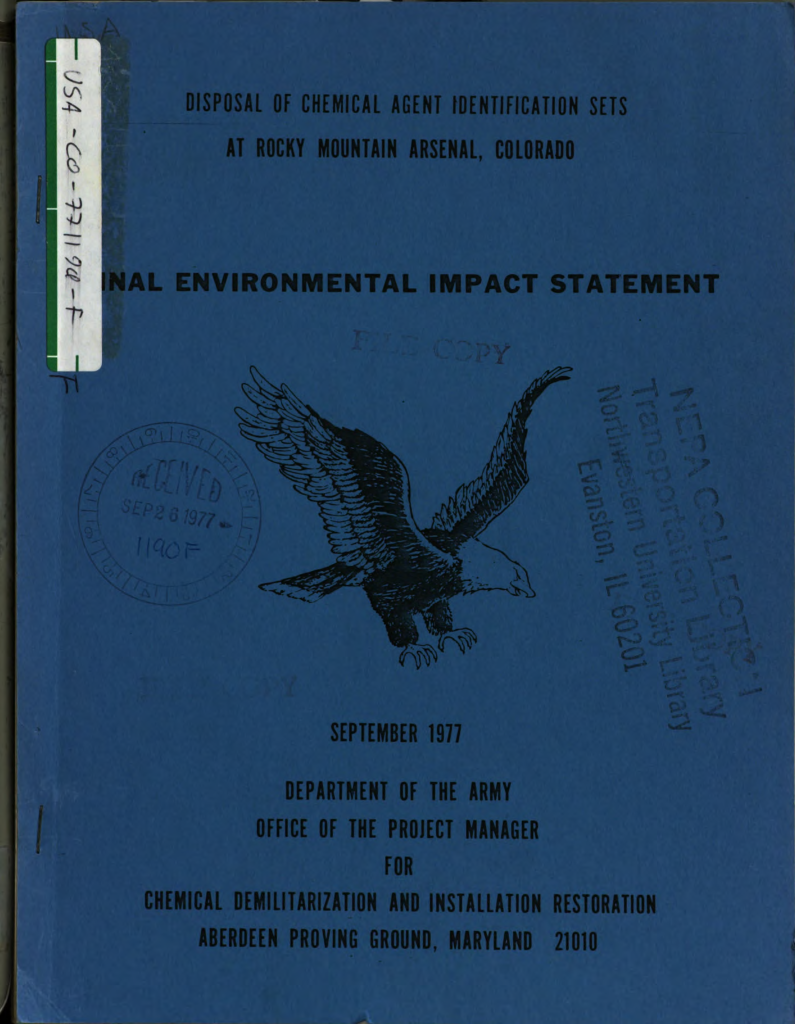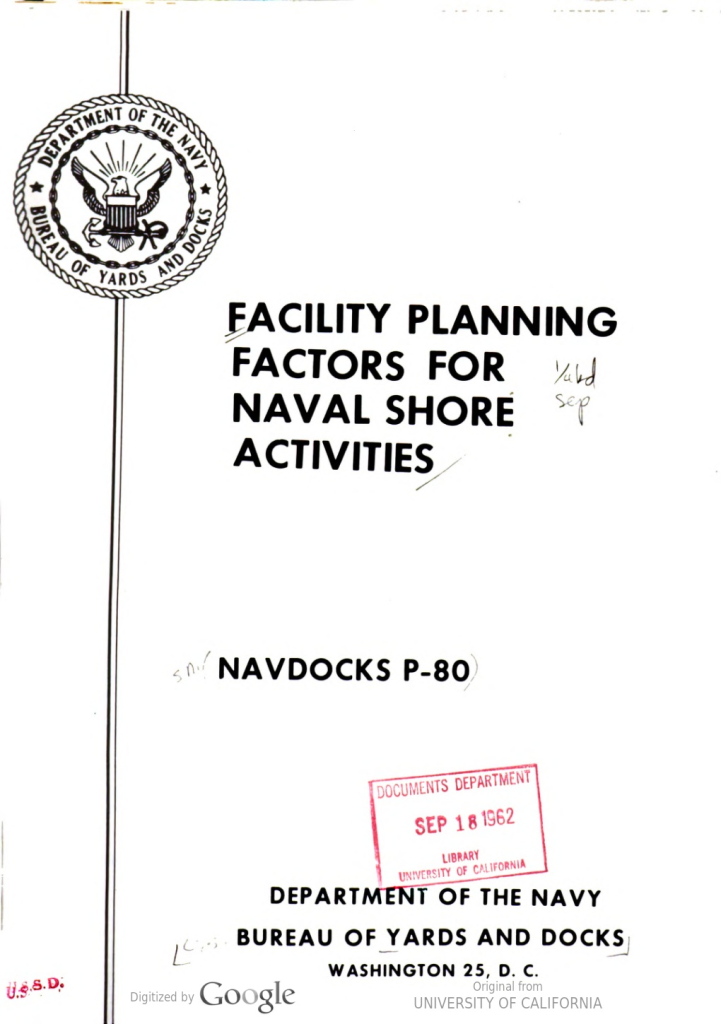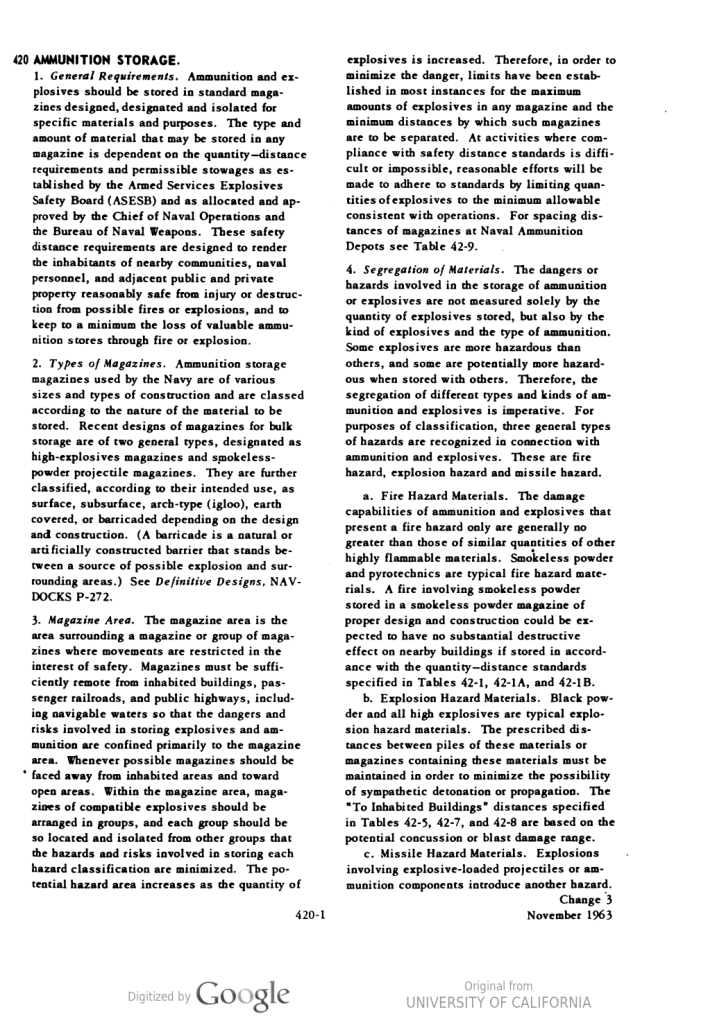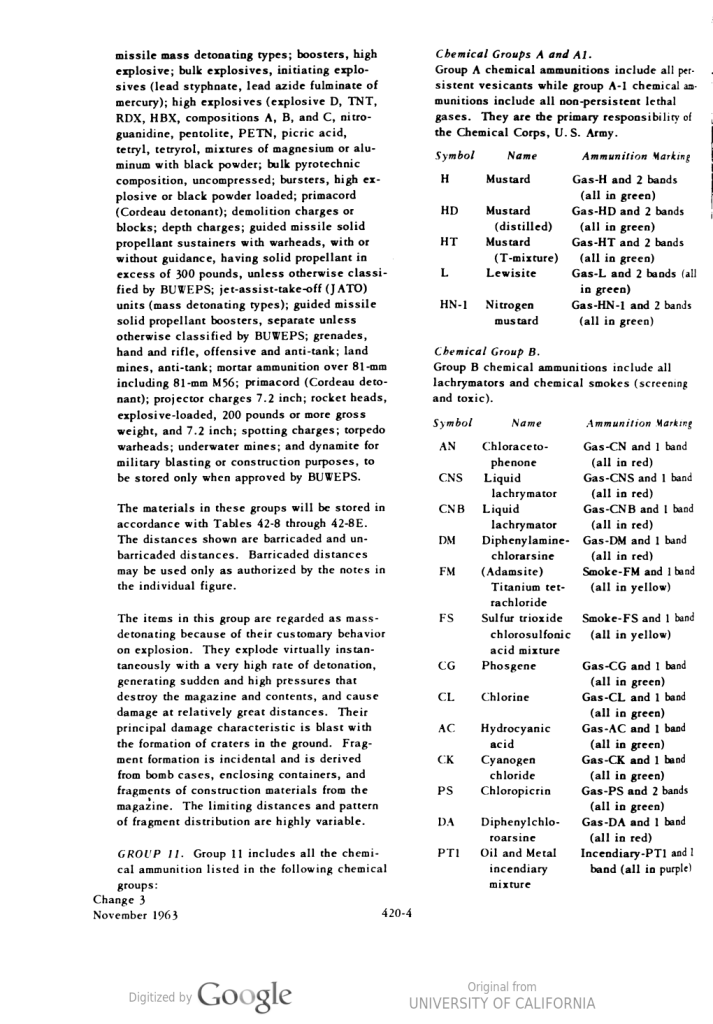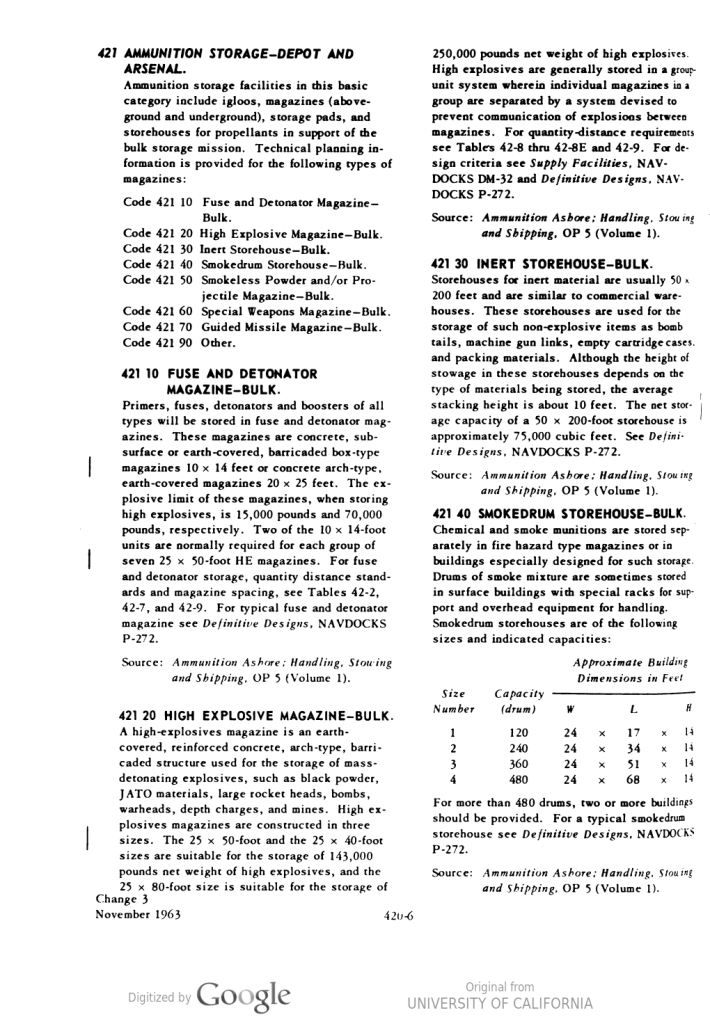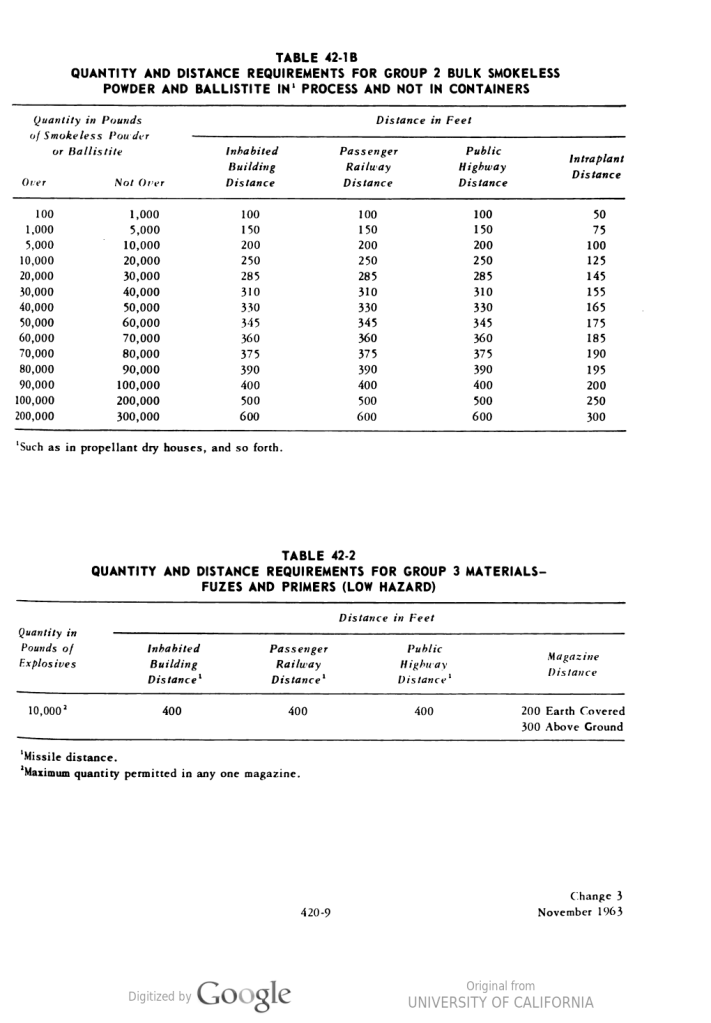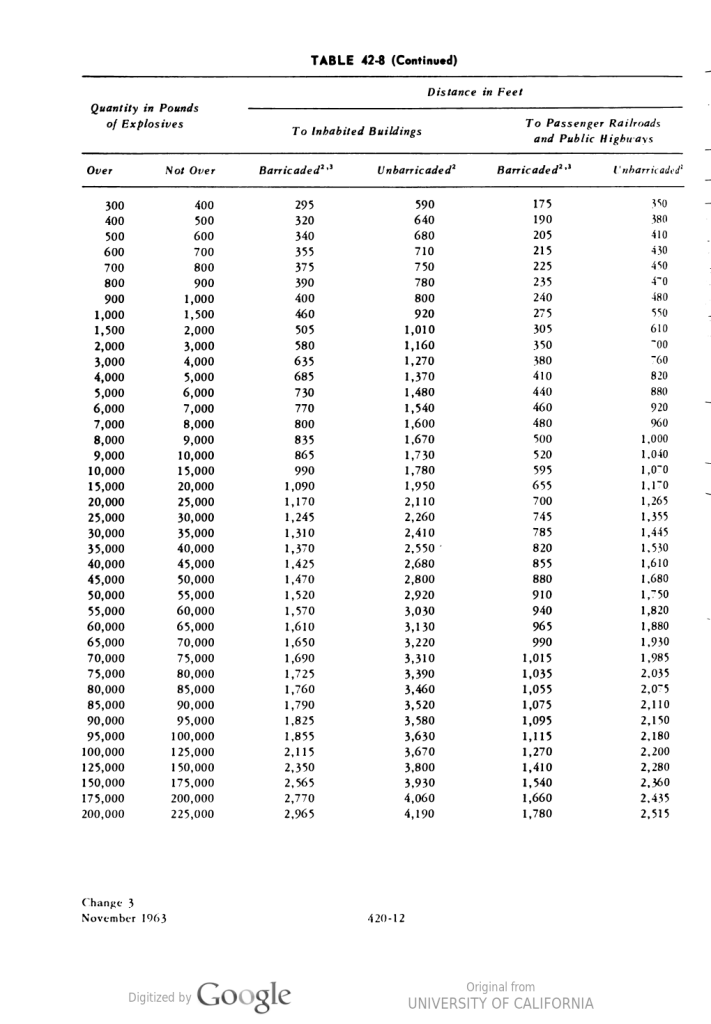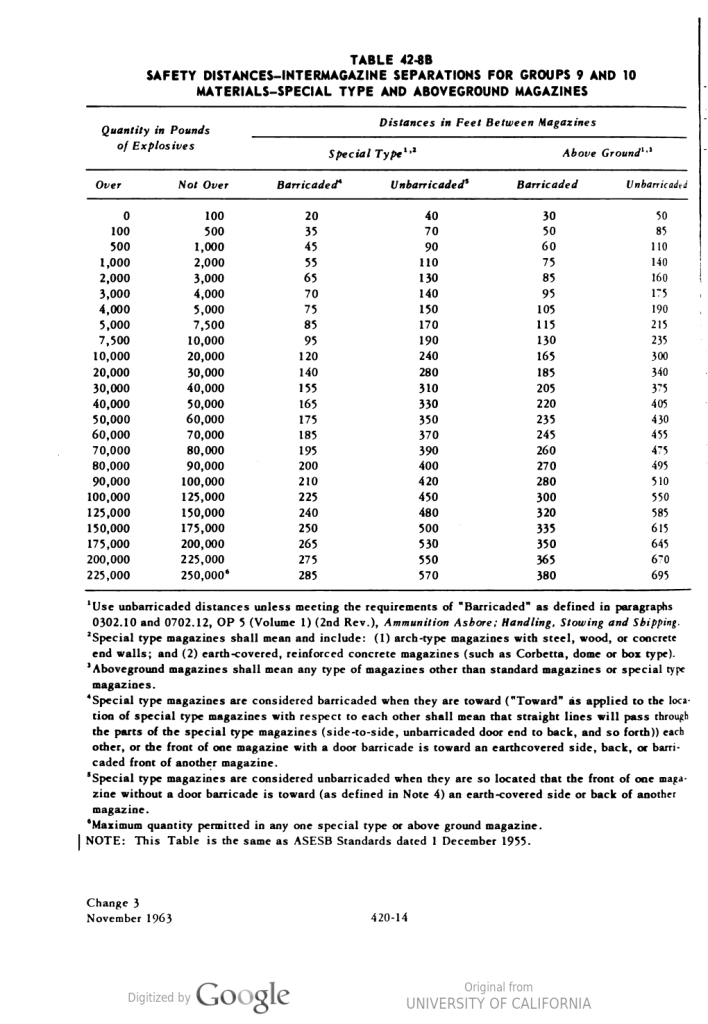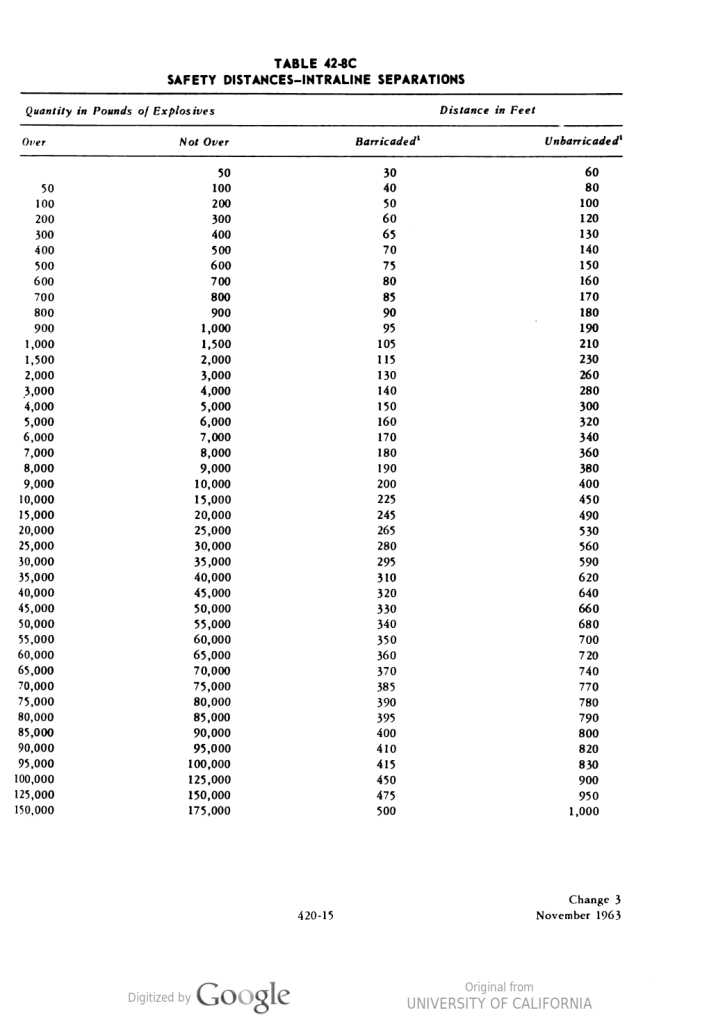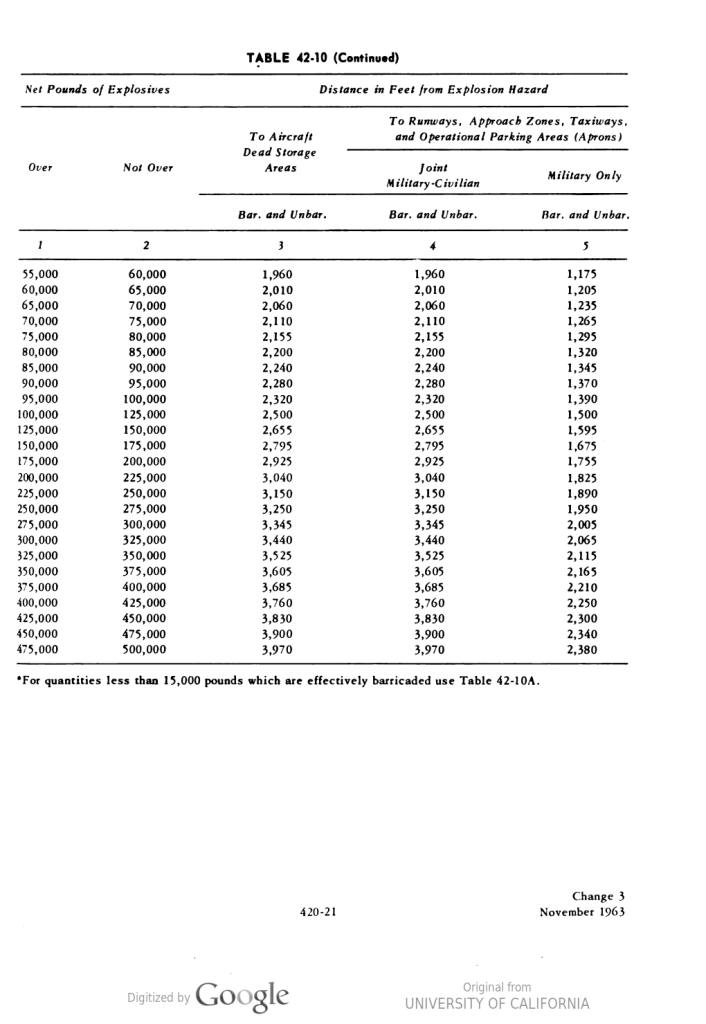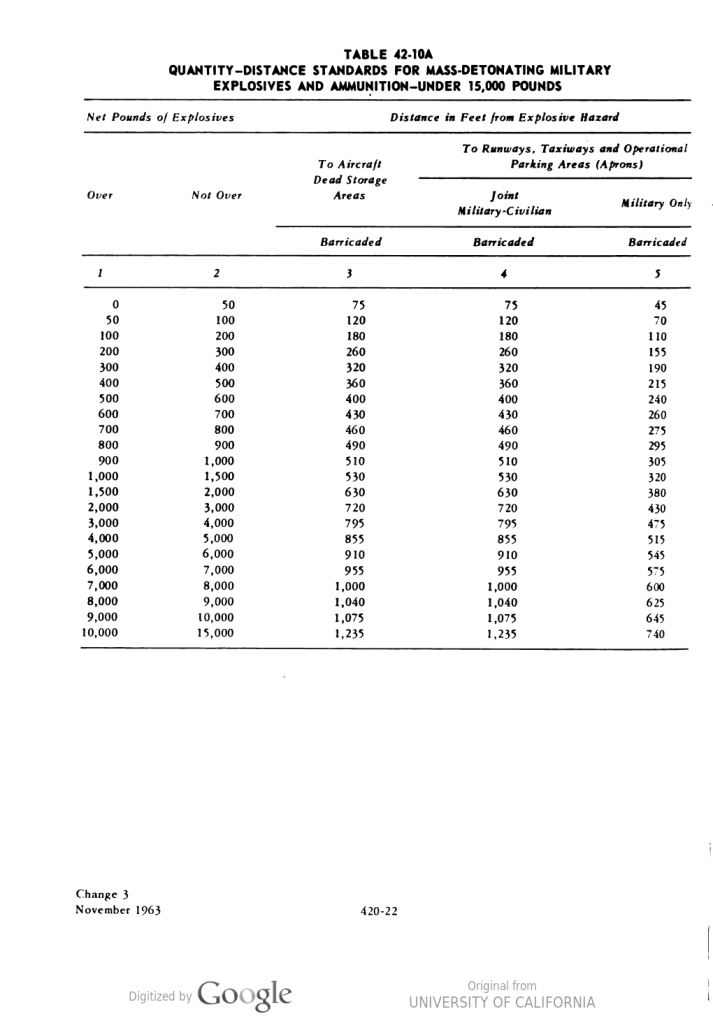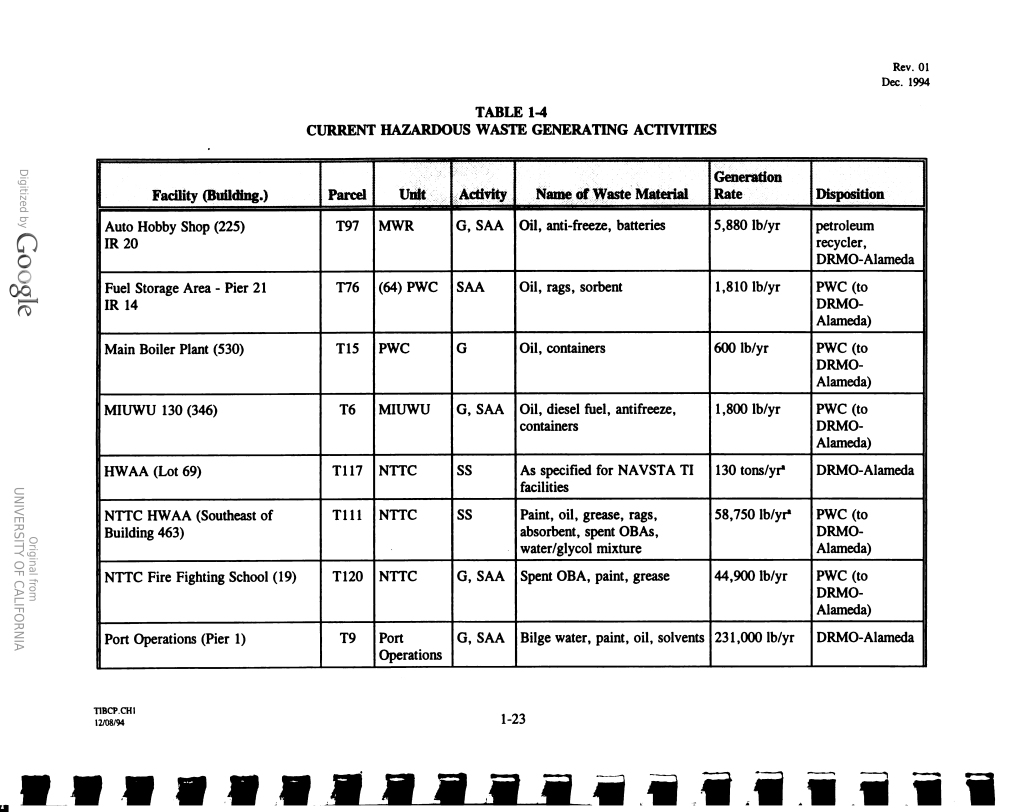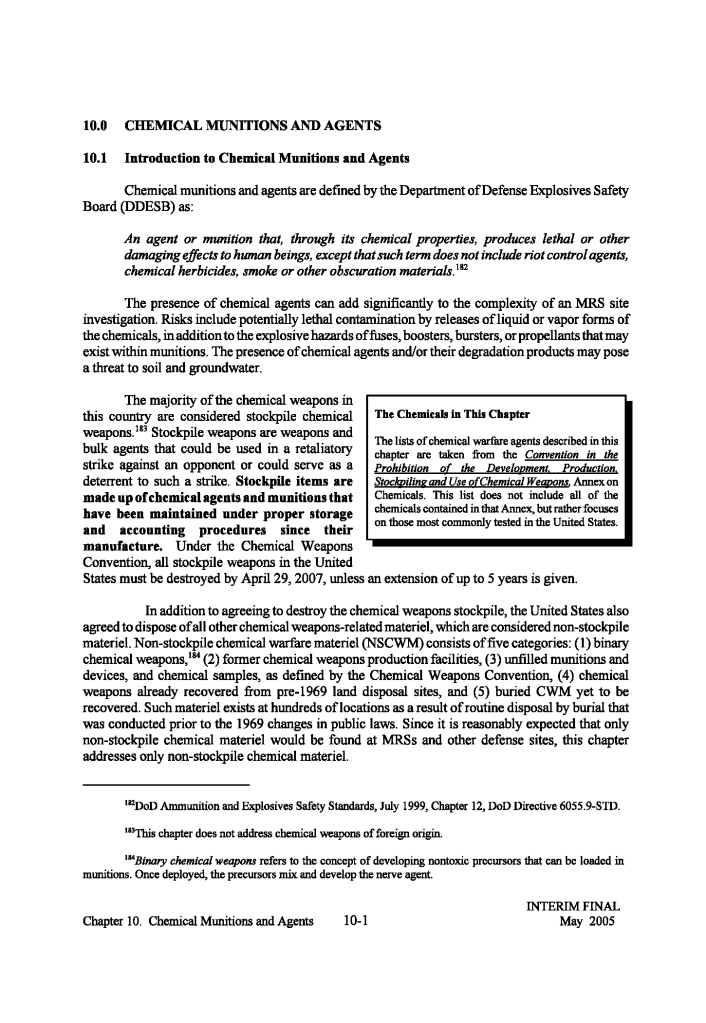Currently Congress is debating the extension of VA benefits to veterans exposed to burning poisons on military bases. Here is the evidence they need to propertly diagnose the illnesses.

This article lists the inventories of the (ABC )”Atomic, Biological and Chemical“warfare training chemicals and devices used by the US Navy for what is now called (CBR) Chemical Biological and Radiological training using the following publications:
- United States. Army. Chemical Agent Identification Set Disposal: Environmental Impact Statement. , 1977. Volume F Appendix A
- Appendix A of the “ABC Warfare Defense Ashore 1960” – Training manual that lists the equipment including Atomic, Biological and Chemical Warfare Training with a brief description of how they are used. – Most of the content of this article.
- Index of Specifications and Standards used by the Department of the Navy Military Index Volume III 1958 which lists all of the Unclassified inventory of the Navy and their numbers. These are published every year for each branch of the military. I will link it here as it is an index and each item is searchable and to list all of it would be extensive.

ABC training was conducted in special bases to train INSTRUCTORS who would then go back to each unit and train men on bases all over the country and on ships, submarines etc. These are joint Bases where military personnel of all branches participated and they also conducted joint excercises in offensive and defensive training up until 1968 when it became defensive training due to the Treaty. Note some of the chemicals used in chemical warfare training could not be taken aboard Navy ships as they are too deadly, for isntance the Hydrogen Cyanide Gas (Zyklon B which was used in the Nazi death camps ) found by the State of Calfornia at Treasure Island in 1993 had to be sent to Naval Air Station Alameda to be disposed of and this chemical weapon was in inventories of the entire Navy in 1949.
They include Treasure Island in San Francisco, Fort McClellan Alabama, Edgewood Training Ground in Maryland and then they expanded to other bases all around the country. They engaged in the training using Chemical and Biological weapons and this article details that work. They also engaged in radiological training and managed to contaminate military bases that have since closed and citie shave been built on them. They also purposely dirty bombed 32 major cities in the US in the late 1950’s and early 1960s as part of the natiowide civil defense tests.
I am documenting the chemicals used on Treasure Island using various publications including US Navy Training manuals and the State of California DTSC survey from 1995 and I will add these to the list, the Chemical Index link is on this Treasure Island website. Note Chloropicrin (PS) is considered today to be a dangerous chemical that damages your lungs and can cause Pulminary Edema.
The Navy operated a Biological Warfare Lab in Oakland CA and the Army’s Biological Warfare Lab was at Fort Baker in Golden Gate National Park but was closed in the late 70s when the biological warfare disease Q Fever broke out of the lab. Today the Park Service uses the Biological Warfare Lab site to teach children about the nature of the National Park.
The Navy let the City of San Francisco place low income housing onto Treasure Island and the residents have died, are dying and just recently a little boy died in June of 2022. This is an atrocity and here is how they did it.
United States. Army. Chemical Agent Identification Set Disposal: Environmental Impact Statement. , 1977. Volume F Appendix A
To make it easier to search the chemicals in this document I will list them here and then the actual pages are below and note this is a chronological list of chemicals over decades:
- Toxic Gas Set , M1, FSN 1365-219-8574 , DODAC Code K941 ( Figure A1 )
- 2.48 liters of mustard agent in the 24 bottles, or 103 ml of agent per bottle
- Mustard
- Mustard
- 2.48 liters of mustard agent in the 24 bottles, or 103 ml of agent per bottle
- Toxic Gas Set , M2 , FSN 1365-563-4146 , DODAC Code K942 (Figure A2)
- 3.150 liters of mustard agent in 28 ampules , or 112 ml of agent per bottle
- Mustard
- Mustard
- 3.150 liters of mustard agent in 28 ampules , or 112 ml of agent per bottle
- Training Set , Chemical Agent Identification , M72 , FSN 1365-051-1807, DODAC Code K945 ( Figure A3 ) –
- Each plastic case contains six 59 ml plastic – coated bottles of agent dissolved into plastic pellets and enclosed in two – layer laminated plastic bags, two 59 ml bottles of simulant, and three smaller bottles of simulant.
- GB Nerve Agent (4 bottles)
- Lewisite (1 bottle)
- Phosgene-simulant (1 bottle)
- Potassium Cyanide (1 bottle)
- Mustard (1 bottle)
- The three small bottles contain approximately 20 ml of:
- GB nerve agent
- VX nerve agent
- mustard agent simulants
- Each plastic case contains six 59 ml plastic – coated bottles of agent dissolved into plastic pellets and enclosed in two – layer laminated plastic bags, two 59 ml bottles of simulant, and three smaller bottles of simulant.
- War Gas Identification Set , Instructional ; Detonation Ml ( w / cap and w / o cap ) , FSN 1365-025-3273 and 1365-025-3282 , DODAC Code K951 and K952, respectively ( Figure A4 )
- Each of the 48 tubes contain 40 ml solutions of either mustard , lewisite , chloropicrin , or phosgene agents . The mustard and lewisite are both in a five percent concentration in chloroform sulution ; the chloropicrin is a 50 percent concentration in chloroform solution ; and the phosgene is undiluted a agent.
- There is a total of 528 ml of lethal agent in each set (chloropicrin is not classified as a lethal agent ) . There are two ml of mustard and lewisite , 20 ml of chloropicrin and 40 ml of phosgene per glass tube , The only difference between the two sets is that blasting caps were issued with the K951 set but packed and shipped in a separate container . – They used blasting caps to set off the agent on the ground which created a cloud of chemical weapons to detect using detection kits which are detailed below in the ABC Warfare Defense Ashore Training Manual documentation.
- Mustard
- Lewisite
- Chloropicrin
- Phosgene
- War Gas Identification Set, Instructional : Detonation AN -M1A1 ( w / cap and w / o cap ) , FSN 1365-323-7782 and 1365-338-0735 , DODAC Code K953 and K954 , respectively (Figure A5) .
- The set contains 8 tubes each of the following agents: mustard, lewisite, phosgene, cyanogen chloride, nitrogen mustard and GA nerve agent simulant. The mustard and lewisite are in a five percent constration in chloroform solution; the nitrogen mustard is a 10 percent concentration in cloroform solution and the cyanogen chloride, phosgene, and GA nerve simulants are undiluted.
- Agent content: There is a total of 704 ml of lethal agent in each set (two ml of Mustard and lewisite, 4 ml of nitrogen mustard, and 40 ml of cyanogen chloride and phosgene per tube. The GA nerve agent simulant is not considered a lethal agent. The only difference betweent eh two sets is that blasting caps were issue with the K953 set but packed and shipped in a separate container.
- Mustard
- Lewisite
- Phosgene
- Cyanogen Chloride
- Nitrogen Mustard
- GA Nerve Agent Simulant ( GA Nerve agent is Tabun)
- War Gas Identification Set , Instructional : 1365-368-6154 , DODAC Code K955 ( Figure A6 ) .
- One bottle contains lewisite, one chloropicrin, and two mustard absorbed in 90 ml of activated charcoal. The fifth bottle contains phosgene simulant. The remaining two bottles contain solid chloroacetophenone and adamsite. The eighth section has the instructions. There is a total of 75 ml of lethal agent in each set. The chloroacetophenone, adamsite ,phosgene simulant and chloropicrin are not classified as lethal agents
- Lewisite
- Chloropicrin
- Mustard
- Phosgene Simulant
- Chloroacetophenone
- Adamsite
- One bottle contains lewisite, one chloropicrin, and two mustard absorbed in 90 ml of activated charcoal. The fifth bottle contains phosgene simulant. The remaining two bottles contain solid chloroacetophenone and adamsite. The eighth section has the instructions. There is a total of 75 ml of lethal agent in each set. The chloroacetophenone, adamsite ,phosgene simulant and chloropicrin are not classified as lethal agents
- Set , Gas Identification , Instructional ( Navy ) , FSN 1365-038-5183 , DODAC Code X302 , X545 , X546 , X547 , X548 , X549 , X550 , X551 and X552 ( Figures A7 and 18 ) . – Note the chart below, the codes were used to identify chemical weapons in base inventories.
- ( 1 ) Outside Configuration : The set is contained in a wooden box with a hinged top . The box measures 19.0 cm by 40.6 cm by 29.8 cm and is divided into two compartments .
- ( 2 ) Inside Configuration : Inside each compartment are two metal cans approximately 10.2 cm in diameter and 11.8 cm high, surrounded by diameter and 11.8 cm high , surrounded by packing material . Inside each can is a bottle with a ground – glass stopper . The X302 sets have two bottles containing a total of 50 ml of nitrogen mustard–one bottle of nitrogen mustard HN – 1 ( .025 liter ) and one bottle nitrogen mustard HN – 3 ( .025 liters ) . Both agents are absorbed in 90 ml of activated charcoal. Other sample replacement sets contain only one type of material as follows :
- Set – Material
- X545 – CG simulant ( contains triphosgene )
- X546 – CN ( tear gas or chloroacetophenone )
- X547 – H ( mustard )
- X548 – L ( lewisite )
- X549 – DM ( adamsite )
- X550 – HN – 1 ( nitrogen mustard )
- X551 – HN – 3 ( nitrogen mustard )
- X552 – PS ( chloropicrin )
and the - X302 –
- one bottle of nitrogen mustard HN – 1 ( .025 liter )
- one bottle nitrogen mustard HN – 3 ( .025 liters )
